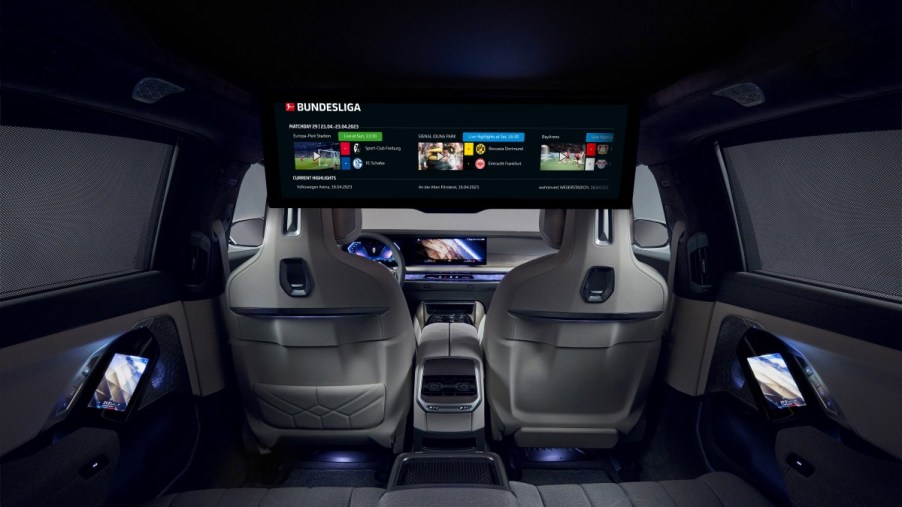
Does the BMW 7 Series Have Too Much Tech?
The 7 Series is one of the most expensive in the BMW lineup. With a twin-turbo engine and all-wheel drive, this full-size luxury sedan fetches close to $120,000 for a new model. It certainly doesn’t lack technology. However, a recent J.D. Power study shows drivers aren’t satisfied with these features.
The BMW 7 Series infotainment interface can be annoying
BMW’s infotainment system and setup process garnered little appeal from real-life owners. The system is operated through a curved touchscreen that measures nearly 15 inches wide and has wireless smartphone integration. It also includes built-in GPS navigation, a 5G Wi-Fi hotspot, and a voice-activated virtual assistant.
There are also two 5.5-inch touchscreens on the front seatbacks. A 12.3-inch screen contains the digital gauge cluster. Each screen features vibrant graphics, and the interface is highly customizable, allowing users to make unique profiles for anyone driving the car.
Most of the interior controls are also touch-activated, but this proved a sore point for J.D. Power’s test drivers. The buttons attract glare when the weather is clear, making them challenging to locate and use. However, once the driver acclimates to the controls, BMW’s infotainment system is reportedly user-friendly.
There are still more minor tech hiccups that aren’t commonplace in other BMW cars. The optional rear-seat infotainment system, which includes a massive 31-inch screen, could infringe on the driver’s rearward visibility. It also doesn’t respond well to Bluetooth pairing. While the voice-activated assistant functions properly most of the time, it’s also prone to misunderstanding inputs and providing irrelevant results.
BMW’s Highway Assist function underwhelmed J.D. Power’s testers
Every BMW 7 Series sedan boasts an assortment of safety tech, including advanced crash-preventative features and blind-spot and parking sensors. A Driving Assistance Professional Package also adds several steering assist functions. Highway Assist is included, a hands-free driving feature that uses lane-centering and cruise control functionality.
However, it’s not always clear when the system is activated. An “Assisted Driving Mode” message appears whenever the software is ready to be engaged. After that, the test driver saw a visual alert prompting them to ease off the accelerator panel. You should then get a notification that says, “Assist Plus Ready.”
As one YouTube video demonstrates, users must activate it by pressing the Mode button twice. This step is reportedly never communicated in the owner’s manual. The screen reads, “Press MODE to activate,” implying the user must press the button only once. Figuring it out might be easy with a little experimentation, but that’s something drivers shouldn’t attempt while moving at highway speeds.
Fortunately, J.D. Power had no complaints about any other advanced driver-assistance (ADAS) feature. Through the additional Parking Assistance Package, buyers receive a 360-degree parking camera and autonomous parking. It also includes a remote theft recorder — a hidden overhead camera that activates when the car’s alarm goes off. If someone breaks in and starts the car, the owner will get a clear view of who’s driving.
When is too much technology a bad thing?
On the one hand, luxury car shoppers expect their vehicles to abound with state-of-the-art technology. The most advanced safety features also keep passengers and the car as safe as possible from injury or theft. However, these features don’t serve anyone if they don’t function as intended.
There’s also a tipping point where all those bells and whistles can become overwhelming. A balance of physical and touch-operated controls can help reduce driver anxiety and frustration. Given how stunning the rest of the BMW 7 Series interior is, we’re sure engineers could integrate those without issue.


